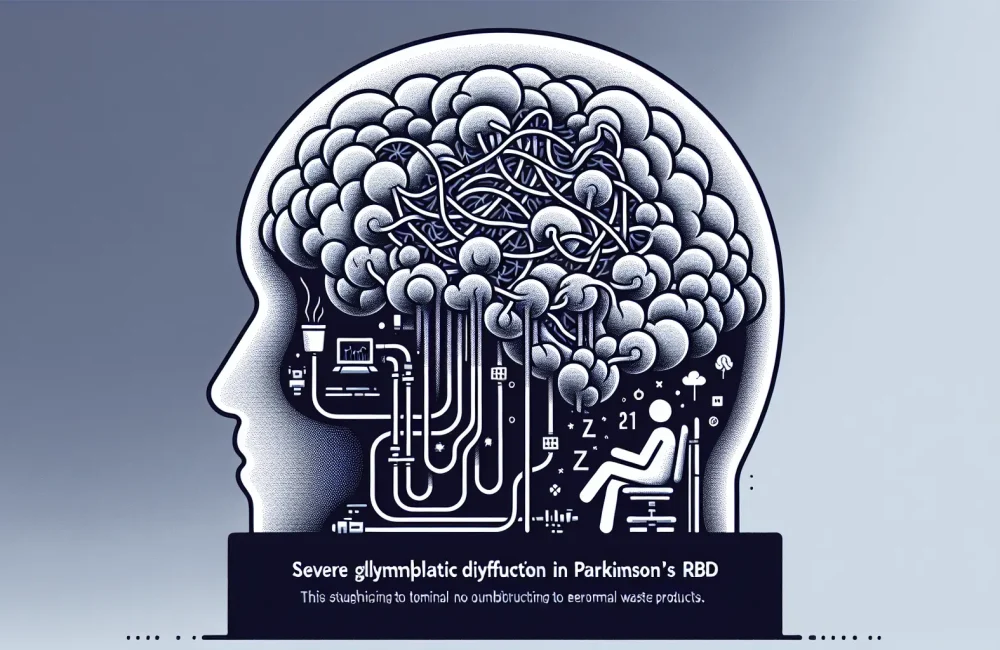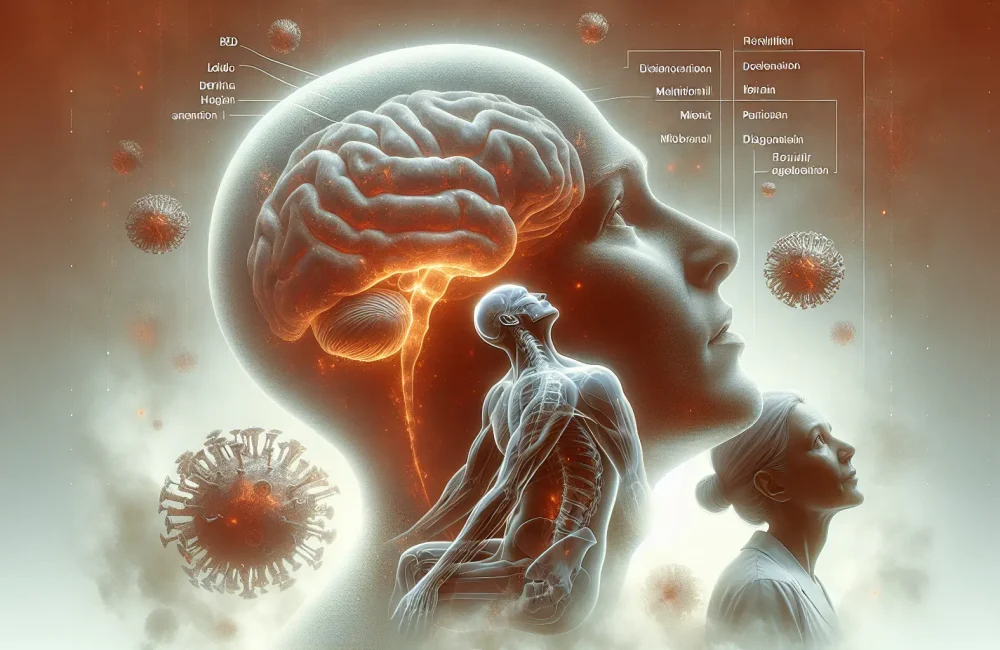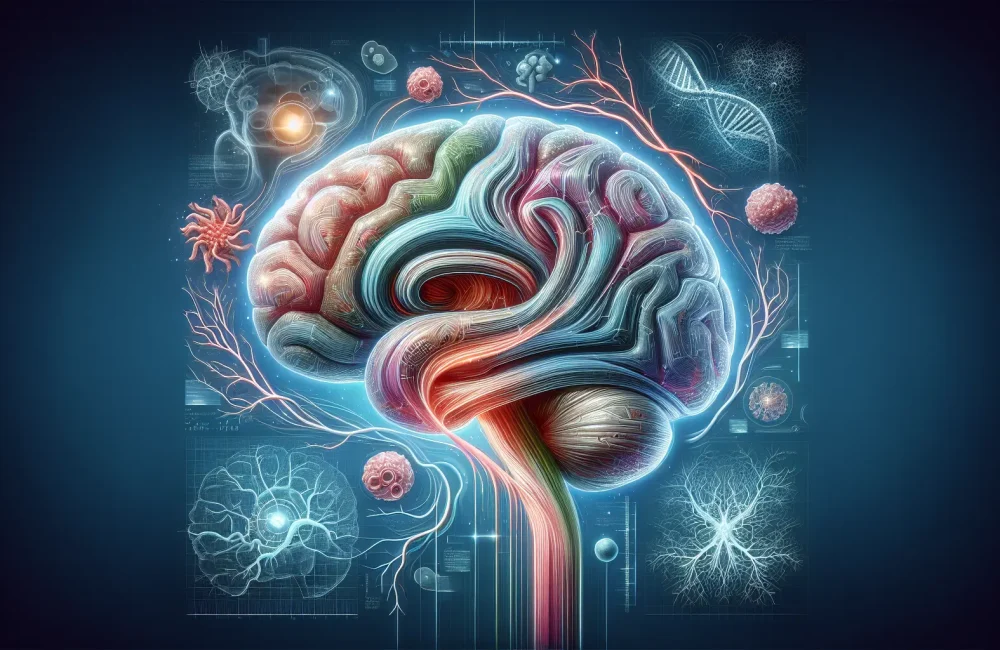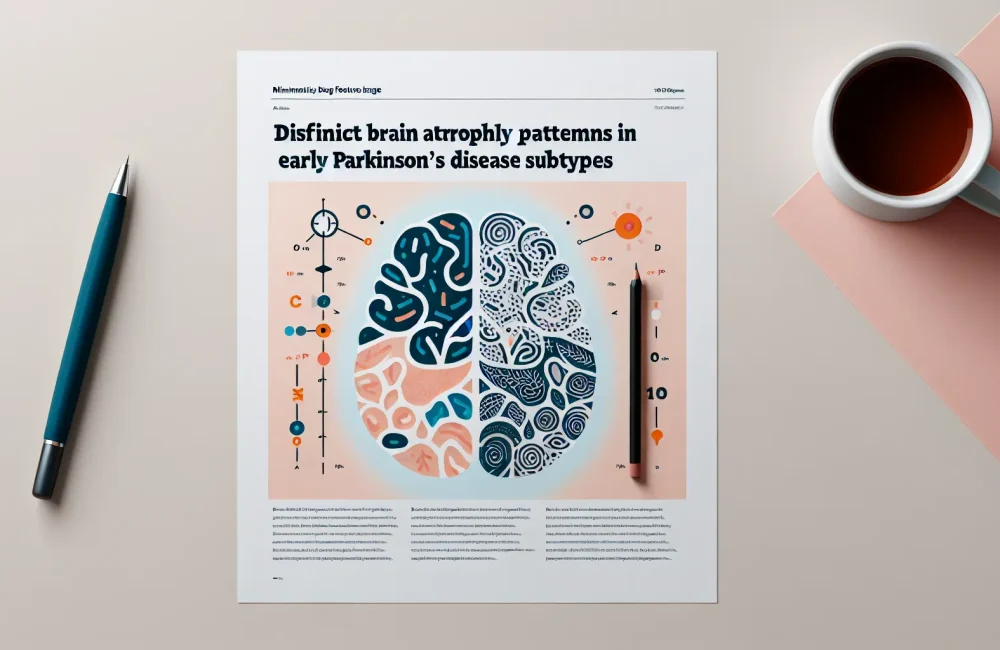By CAFMI AI From npj Parkinson’s Disease (Open Access)
Glymphatic System Dysfunction and Parkinson’s with RBD
Parkinson’s disease (PD) is a complex neurodegenerative disorder marked not only by its signature motor symptoms but also by various non-motor symptoms, among which rapid eye movement sleep behavior disorder (RBD) features prominently. RBD is recognized for causing individuals to physically act out vivid dreams during REM sleep due to loss of normal muscle atonia. Clinically, RBD is considered a marker of a more severe or distinct subtype of PD, in part because patients exhibiting RBD often experience a hastened progression and increased severity of both motor and non-motor manifestations. Recent research has focused on the glymphatic system — a brain-wide network responsible for clearing neurotoxic waste products such as alpha-synuclein, a protein implicated in PD pathology. Impaired glymphatic function is hypothesized to worsen neurodegeneration by allowing toxic proteins to accumulate. However, the interplay between glymphatic dysfunction and RBD presence in PD has been unclear until now. This study sought to clarify this association by examining glymphatic clearance function using diffusion tensor imaging along the perivascular space (DTI-ALPS), an advanced MRI technique, in patients with PD categorized by presence or absence of possible RBD, alongside healthy controls. Understanding the role of glymphatic impairment in PD patients with RBD could reveal important insights into disease mechanisms and potentially targeted therapies.
Study Design and Findings on Glymphatic Dysfunction in PD with RBD
This investigation recruited a cohort of Parkinson’s disease patients who were classified into groups based on the presence or absence of possible RBD, identified through clinical questionnaires and polysomnographic data when available. Healthy control subjects, matched for age and sex, were also enrolled to benchmark glymphatic performance. The key methodology hinged on diffusion tensor imaging analysis along the perivascular space (DTI-ALPS), which provides a quantitative index representing glymphatic system efficiency in clearing neurotoxic proteins from the brain interstitial fluid. Results demonstrated that PD patients with possible RBD exhibited significantly lower DTI-ALPS indices compared to PD patients without RBD and healthy controls, indicating a more severe impairment of glymphatic clearance. Furthermore, the degree of glymphatic dysfunction correlated positively with RBD symptom severity and overall clinical measures of PD severity. These findings suggest that the glymphatic system’s breakdown might underlie or exacerbate the pathology in the PD subtype marked by RBD, highlighting the potential of using DTI-ALPS as a biomarker for disease progression and severity in clinical settings.
Clinical Implications and Future Directions in Managing PD with RBD
From a clinical standpoint, the identification of more pronounced glymphatic dysfunction in PD patients with possible RBD shapes how clinicians might approach assessment and management. The presence of RBD could serve as a clinical indicator of underlying neurodegenerative processes that are more advanced or distinct in terms of protein clearance failure. This underscores the importance of thorough sleep assessments, including polysomnography when needed, in Parkinson’s populations to identify RBD. Therapeutically, these findings open new avenues aimed at restoring glymphatic function or mitigating its decline, potentially through interventions influencing sleep quality, vascular health, or novel pharmacological agents aimed at enhancing waste clearance mechanisms. Additionally, understanding glymphatic impairment’s role may help differentiate PD subtypes during diagnosis, facilitating personalized treatment plans. Future research should focus on longitudinal studies assessing how glymphatic dysfunction evolves in relation to RBD progression, and whether interventions targeting sleep disorders may alter the neurodegenerative trajectory. Close follow-up and multidisciplinary approaches integrating neurology, sleep medicine, and radiology will be vital for optimizing outcomes for this distinct PD patient subgroup.
Read The Original Publication Here






